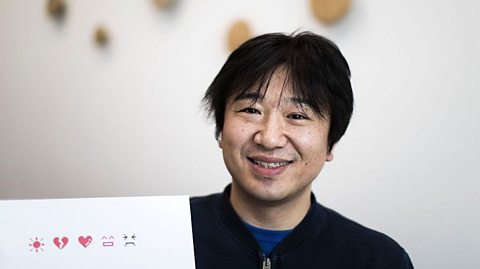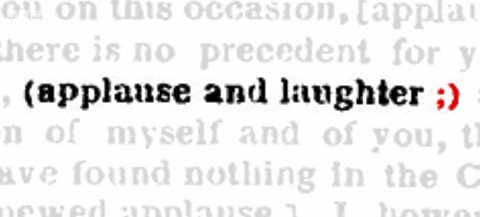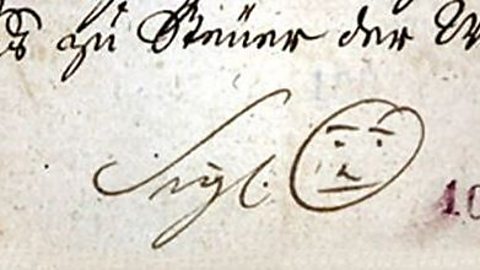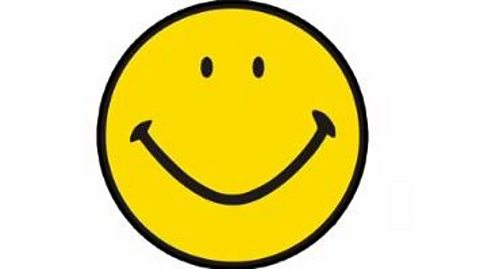The first ever emoticon was recorded in September 1982.
But who decided to digitalise the smiley face in the first place? How did emoticons evolve into emojis we use today?
Here are six things you might not know about emoticons.
The emoticon was invented by a computer scientist
Scott Fahlman, programmer and retired professor at Carnegie Mellon University, was the first documented person to use the emoticons :-) and :-( when proposing the sequence of characters to mark when youтre joking (or not joking), as tone can be difficult to distinguish over text.
Prof Fahlman posted the тsideways smileyт onto an online computer science board at the university, and others contributed to the thread. Emoticons then reached world-wide discussion systems such as Usenet - similar to what we would now call an internet forum.
Emoticons and emojis are not the same
An emoticon is a blend of тemotionт and тiconт, made up of characters from a keyboard, whereas an emoji (a combination of the Japanese тeт for тpictureт and тmojiт for тcharacterт) is small image that represents something.
The first emojis were created by Shigetaka Kurita in Japan in 1999 for mobile phones, in order for users to communicate simple messages quickly and efficiently through icons.
Emojis were eventually incorporated into corporate email and messaging systems all over the world - but Apple has often been credited for popularising emojis globally, as the iPhone introduced their own emoji keyboard and competing phone companies followed suit.

The smiley came first
The iconic yellow smiley face has an interesting story behind it - and it was around long before the emoticon. In 1963, comic artist and graphic designer Harvey Ball was commissioned by an insurance company in Worcester, Massachusetts, to promote their happy image with the phrase "Have a happy day" (later тHave a nice dayт - which is still a slogan for smiley t-shirts now).
The design took less than 10 minutes, but it exploded in western pop culture, being referenced in music, film and art.
It even became a symbol of UK rave culture in the 80тs and 90тs - however, the authentic тWorcester-madeт smiley by Harvey Ball has signature differences, such as the right eye being larger than the left, and the thickness and angle of the mouth.
But Harvey didn't copyright his design, so missed out on the millions that his design generated throughout the decades :(

Modern-day Hieroglyphics?
You might have heard emojis being compared to Hieroglyphics, but this isnтt entirely accurate.
Hieroglyphs are logograms - characters that represent words or phrases - and emojis are pictograms, which are pictures of the things they represent.
A single Hieroglyph can mean many things depending on the context in which it is written, or what symbols it is paired with - but while these would be understood as a language, emoji combinations are largely subject to interpretation. What do you mean broccoli-broccoli-crying face?
However the тrubus pricipleт, where a symbol for one word is used to stand in for a word with a similar sound - similar to a system that middle Egyptian also used - can apply to emojis. E.g. the phrase тoh dearт could be written as тoh (deer emoji)т, which is perhaps why emojis are confused for modern Hieroglyphics.


Theyтre not the same in every language
Did you know different countries recognise different emoticons? Some languages require different characters and have a different keyboard, so it makes sense that the emoticons they тspell outт have some variation.
In Russia, the colon punctuation mark is not used on the Russian keyboard, so ) is enough to show happiness, or ))) for extreme happiness.
Japanese emoticons are called тkaomojisт from тkaoт (meaning тfaceт) + moji. Kaomojis use the kanji keyboard and have a larger range of expression in the eyes than the western emoticon - for example, evil eyes go inward (яНЖФгЌТД) and kind eyes go outward (ТДтНяН). Japanese emojis in the 1990s were inspired by kaomojis - so really the evolution was not down to smiley emoticons, but kaomojis!
Other countries utilise accents and characters in their keyboards to create more complex emoticons, e.g. Korean emoticons у у у and Brazilian emoticons УВГхУГ.
If you frequent internet forums, you may have seen a melting pot of emoticons in eastern upright style, but using English language keyboards: e.g. T_T for a crying face.
But their meanings can also differ across cultures. For example, >.< is a cute face in South Korea, but an angry face in Hungary - be careful who youтre sending them to!


They might have existed before the digital age
There is some evidence that emoticons are far older than the sideways smiley. While it is debated whether it was deliberate or a typo, the first emoticon in print may have been inserted into a transcript of an 1862 speech by US president Abraham Lincoln.
The transcript featured a parenthesis т(applause and laughter ;)т, and itтs an unresolved argument that the use of a winky face ;) was to signify humour, or was simply a mistake or misinterpretation of a grammatical symbol of that era.


Smiley faces have also been documented elsewhere through out history, such as on the signature of Bernard Hebbot - an abbot from 1761 Cistercian cloister (now Czech Republic) - who drew a smiley-like drawing next to his name. Paintings and carvings of the smiley face have been seen on pots as far back as the 1700s.
However, it is widely accepted that Fahlmanтs digital sideways smiley is the face that started it all.

ТщЖЙЙйЭјЪзвГШыПк Ideas looks at the history of emoticons... it goes back further than you think :-)

Five elephant facts you wonтt forget
We've taken a look at some of the biggest rumours about the gentle giants and checked if they're true.

Quiz: How well do you know these classic arcade games?
Can you get a High Score on this ultimate video arcade games quiz?
